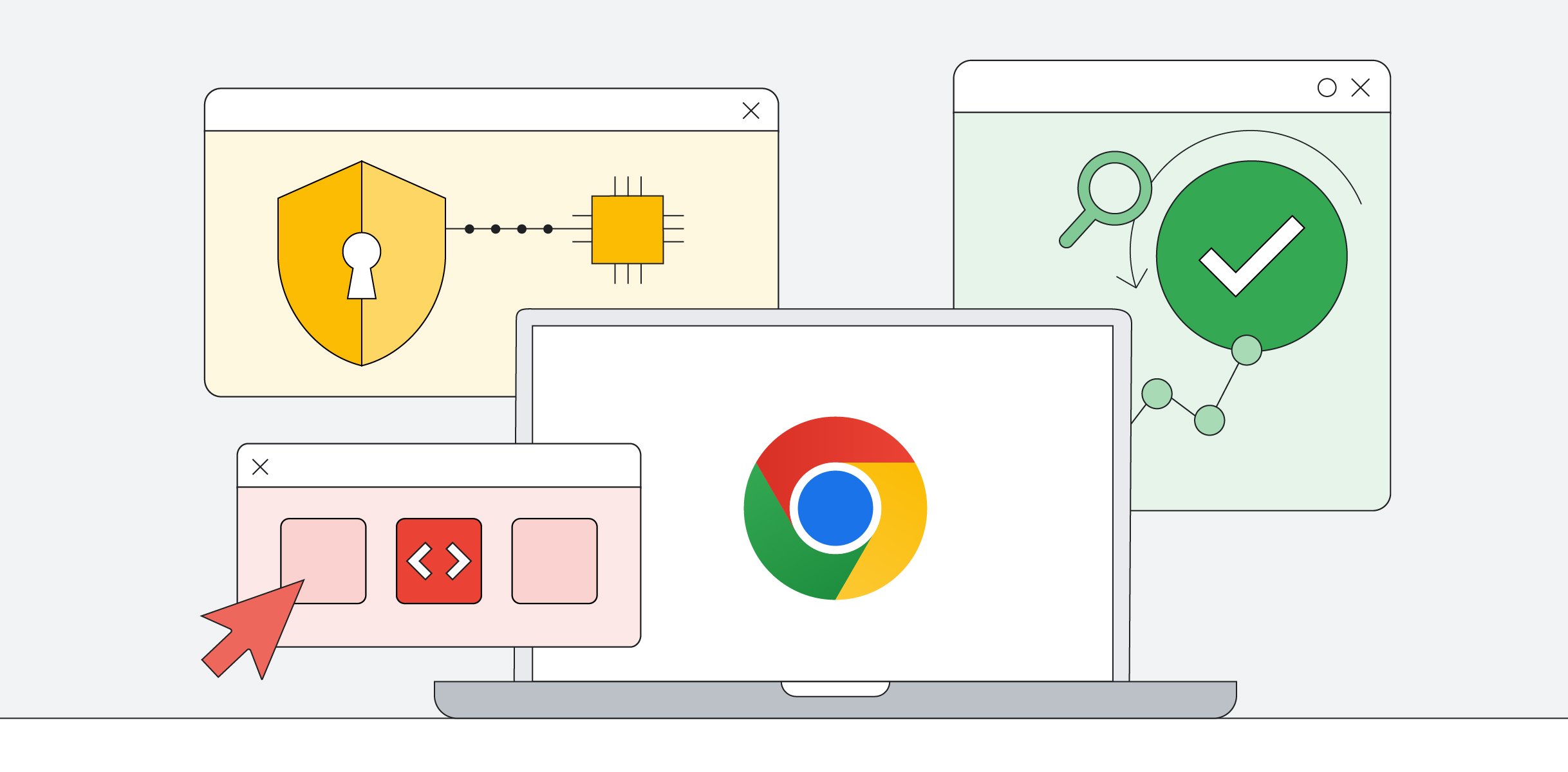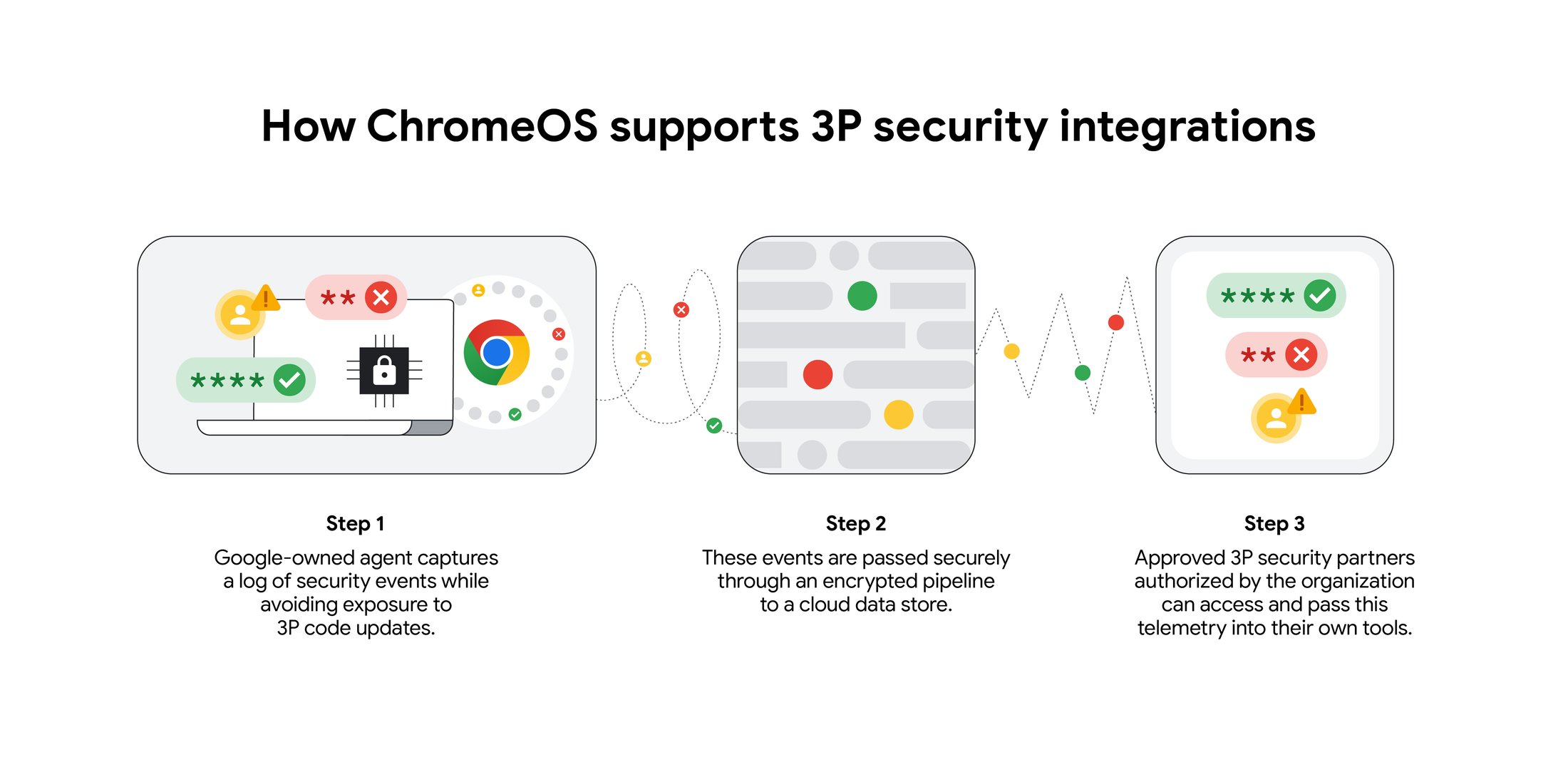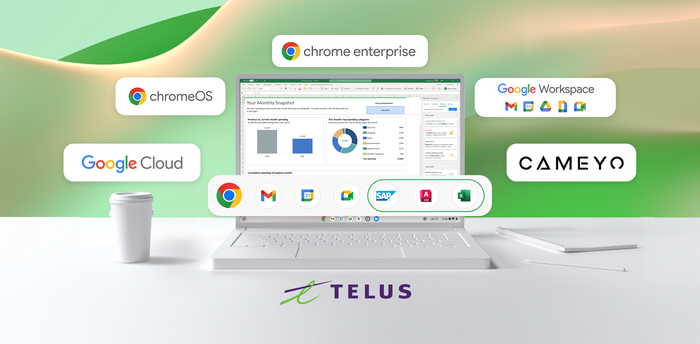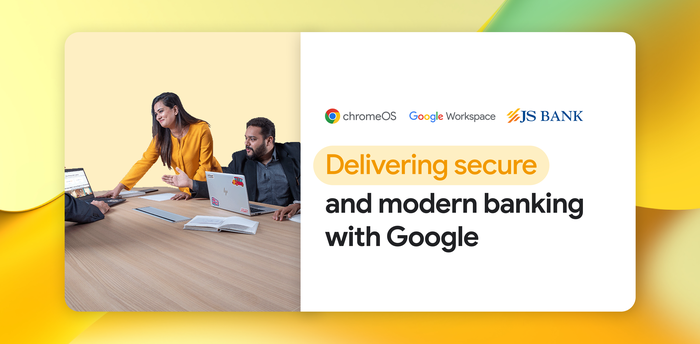The ChromeOS Difference for Corporate Resilience

Max Kayen
Product Marketing Manager, ChromeOS
Aashay Shringarpure
Staff Software Engineer, ChromeOS Security
ChromeOS was designed with security at the forefront. Features like verified boot, sandboxing, and on-device encryption help ChromeOS users feel confident they are protected from bad actors, even without third party security software. It’s why ChromeOS was recognized as the most secure operating system out of the box, when compared with MacOS and Windows,1 and why there has never been a reported ransomware attack on a ChromeOS device.*
ChromeOS achieves this high level of security by restricting third-party access to its core operating system, including the kernel, which manages critical tasks and produces valuable devices and security telemetry for IT and security operations. Doing so not only protects users from many traditional system compromise methods, it also makes organizations more resilient against technical incidents.
To support organizations using third-party security tools, ChromeOS created an extraction layer to securely share device telemetry data to third parties without granting kernel access. This allows third-party consumers of Google’s APIs to extract necessary information without introducing third party risk that can impact core operating system and kernel functionality.


Here’s how it works. Each ChromeOS device has a security agent that is owned and maintained by Google only. This agent collects telemetry data from ChromeOS and its kernel, which gets passed through an encrypted reporting pipeline to Google-approved and organization-authorized security vendors through a read-only API. This is unlike other operating systems, which require security vendors to install an agent that has core kernel access, and introduce risk of impacting critical processes such as device bootup.
Review our endpoint detection and response and data loss prevention documentation to learn about some of the features security tools can leverage for ChromeOS. You can also check out our recent webinar to learn more about Google’s cloud-based architecture and proactive incident response with ChromeOS, Workspace, and Mandiant.
1 Atredis Partners: Google ChromeOS Competitive Analysis, 2024
* As of 2024 there has been no evidence of any documented, successful virus attack or ransomware attack on ChromeOS. Data based on ChromeOS monitoring of various national and internal databases.



